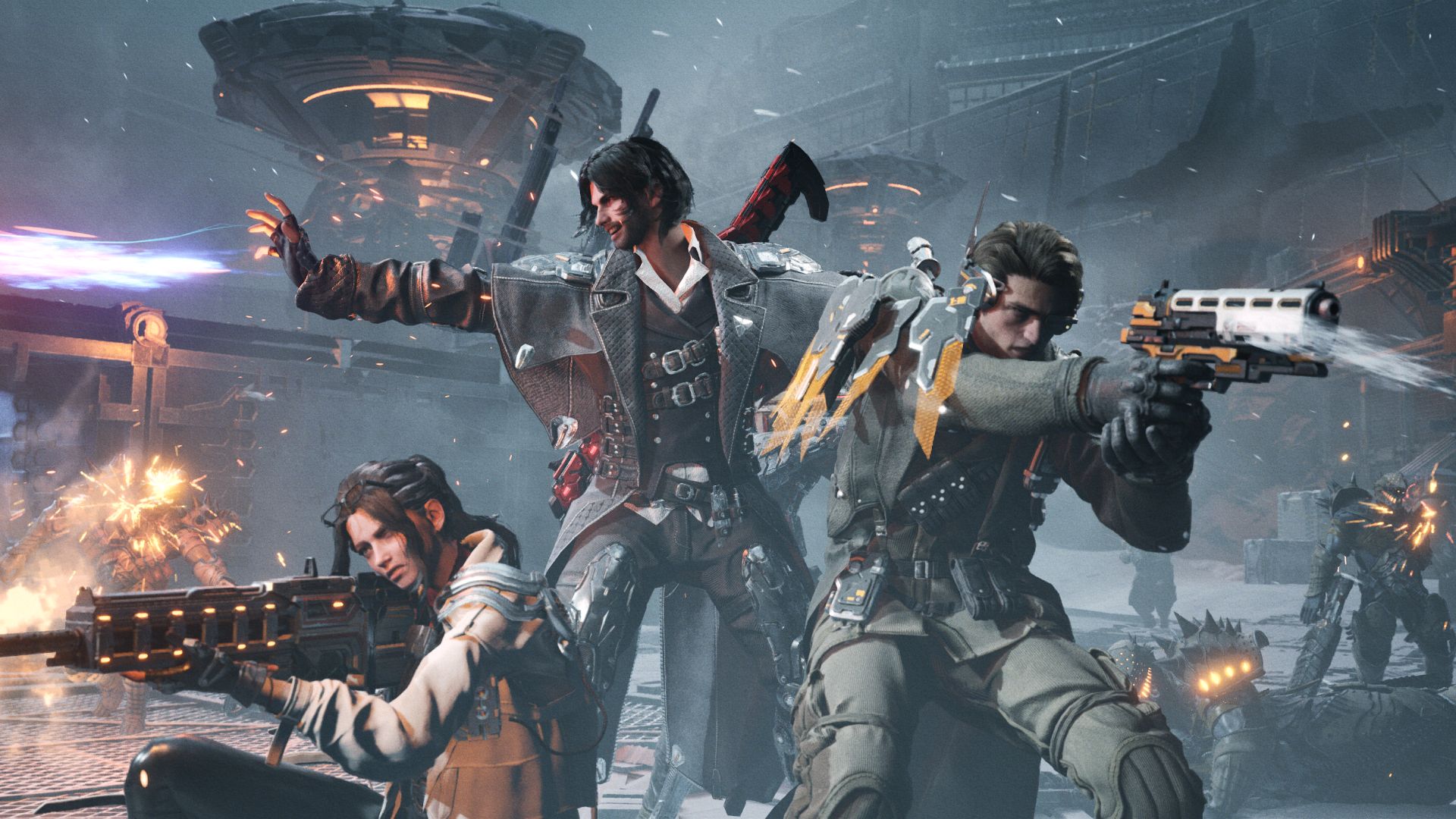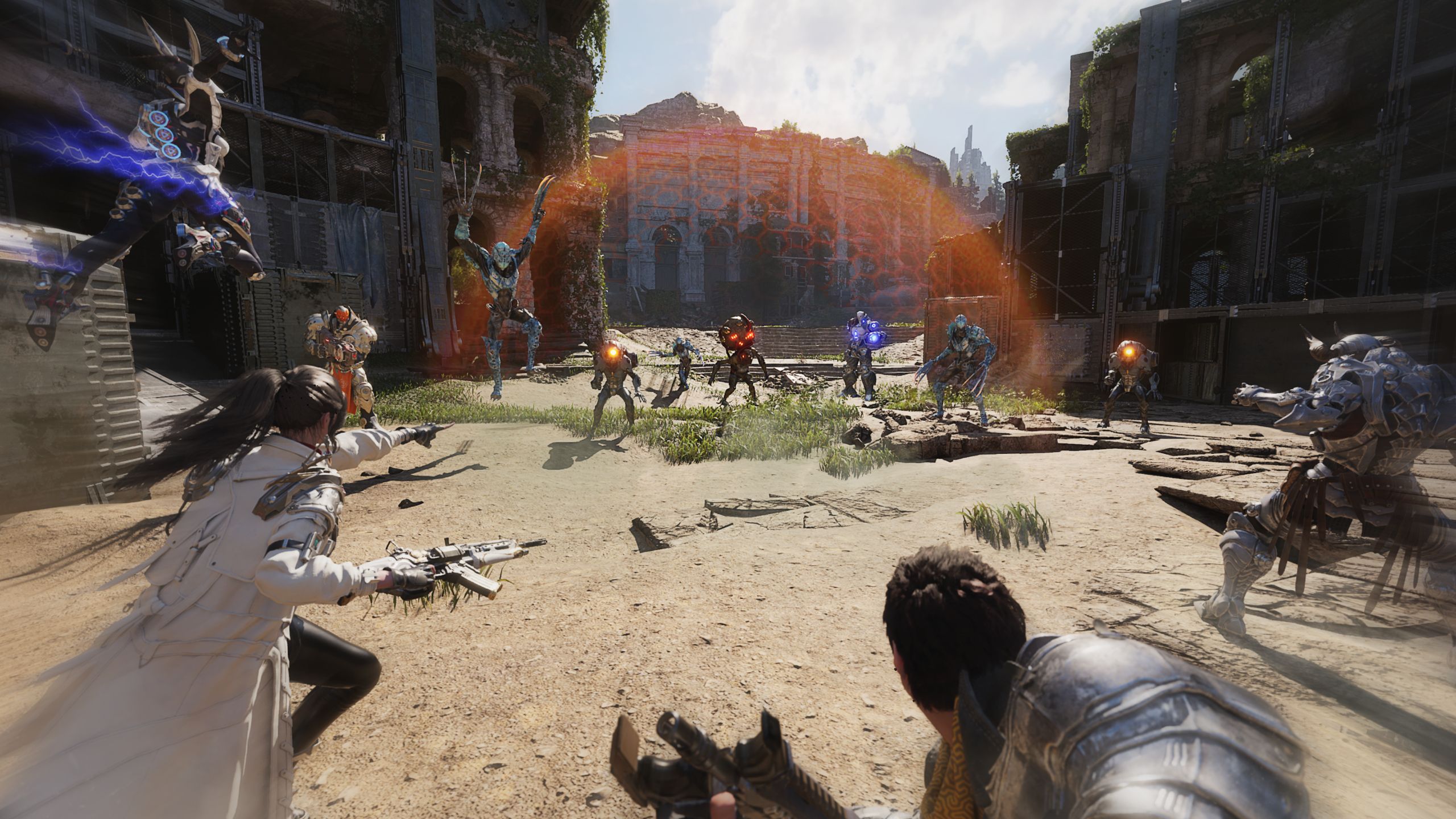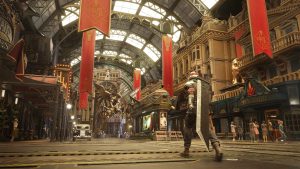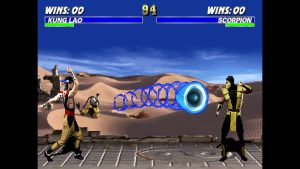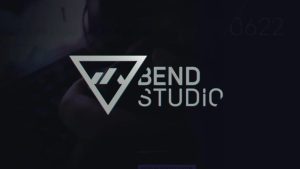
Five years ago, I stopped playing Warframe, taking a break from the grind and Digital Extremes’ experimental updates to focus on other titles. If you told me I’d revisit it, but with no Bullet Jumping, Arch-Wings, K-Drives or Nidus (send for him, please), I wouldn’t believe you. It doesn’t fully describe The First Descendant, Nexon’s free-to-play looter shooter launching in an industry where the term may as well be poison, but the connections are hard to deny.
Several aspects of The First Descendant are ripped clean out of Warframe. The Modules system, from mod capacity to polarities for reducing the overall cost of a matching mod; the Mastery Levels, which are pretty much like Mastery Ranks but without the tests, right down to earning XP for them by levelling up Descendants without Socket Types and raising the proficiency level of weapons; heck, even the researching system, where crafting means a waiting period but you can accelerate it with some sweet premium currency.
"It feels like a looter shooter that took the essentials of its competition during the older days without accounting for any refinements or evolutionary leaps taken since."
Even the Descendants, from their skills ranking up as they level to their specific Modules transforming said skills, are akin to the different Warframes. The only difference is they’re treated as bespoke characters unless Nexon has a Second Dream-like plot twist in the works.
It’s not to say that all of this is poorly implemented or that iterating on existing systems and mechanics isn’t viable. However, it all highlights how inferior The First Descendant is in many other areas. It feels like a looter shooter that took the essentials of its competition during the older days without accounting for any refinements or evolutionary leaps taken since. Leave those other games aside, and you have a third-person looter shooter with dreary mission design, an uninteresting story, relatively unexciting loot, lackluster characterization, excessive amounts of grinding and, my least favorite, annoyingly implemented microtransactions.
Let’s start from the beginning. Or actually, let’s not, since you’ve probably heard it all before. An alien race known as the Vulgus attacked humanity, wiping out much of it. Mysterious beings known as the Colossus who are…there, doing their thing. Powerful individuals known as the Tenno – er, Descendants, who fight back against the Vulgus. A mission to find three Ironhearts – McGuffins necessary to destroy the Dimensional Wall, with a big bad named Karel who brings the Monitor from Anthem to mind (but with more facial expressions and internal faction conflict). A mysterious Guide who awakens to assist the Descendants.
Even if this all sounds interesting and new, don’t worry – the story structure does its darndest to make it as milquetoast and boring as possible. You walk back and forth between different characters at Albion HQ, who mostly serve as vendors and/or story receptacles. When in the patrol space (known as the Battlefield), you often have to complete three or four “missions” – little more than your routine activities – to access the main mission. Rinse and repeat.
"Unfortunately, the only unique mission type that doesn’t involve wholesale slaughter is the platforming and collecting little orbs, which felt off since the momentum of your jumps felt independent of the platform’s movement."
I can’t even say the characterization is all that fresh. If it’s not Alpha, Albion HQ’s leader who’s gruff and distrustful of the Guide but still a softy deep down, then it’s the starting Descendants: the dashing but arrogant Lepic, the strong yet silent Ajax and the alluring and intelligent Viessa. The dialogue throughout the story does no one any favors, but the voice actors try their best to make it work. It’s one of the reasons why characters like Bunny, Sharen and Module Upgrade Guy can stand out despite their two-dimensional character veneers.
Bunny’s dedicated mission is perhaps the exception to the rule for the story-telling. Focusing on her missing parents, this offers a better look at the character, who’s always on the move and has to go fast, but seemingly as a way to block out her past trauma. The mission itself is little more than a fetch quest, where you collect records in existing locations to piece together what happened to them. It’s still endearing and gives some hope that future Descendant stories can offer better glimpses into their personalities. At the very least, they need some varied gameplay and objectives.
As noted earlier, The First Descendant’s gameplay loop consists of three categories: Sub Missions, main missions and Void Intercepts. The sub missions involve exploring a part of a larger region to complete various activities, each offering rewards with specific drop chances (the rarer, the less likely you are to get them). You defeat enemies to get bombs and attach them to three different points or hack three terminals while fighting off waves of enemies.
There’s also defending a point to get an item and deposit it into a little bot for some real spice. Sometimes, you’ll just have to annihilate enemies within an area. I did find the objective of running towards various smaller spheres and standing in their limited radius to deactivate them somewhat different. Unfortunately, the only unique mission type that doesn’t involve wholesale slaughter involves platforming and collecting little orbs, which felt off since the momentum of your jumps felt independent of the platform’s movement.
"The gunplay isn’t as satisfying as Destiny 2, nor is the melee combat anywhere near as good as Warframe. However, it’s still snappy and responsive, even when you’re weaving through areas and slaying foes."
As for the side missions, Recon Missions require you to shut down surveillance towers, but they also quickly devolve into “Kill all enemies” anyway. Void Fragments are your typical horde mode-like waves of enemies, except you need a Descendant with a specific element to activate them. Void Fusion Reactors involve fighting bosses, which is a change of pace, and then you have the Encrypted Vaults. The latter requires following some sound cues and then spending a Code Analyzer to activate a timed mini-game. Fail – and the iffy timing on the button presses can make you fail – and the Analyzer is lost. Better hope you’re not spending any of those rarer Precision Code Analyzers.
Once you’ve done all the requisite busy work, it’s onto the story mission, essentially an instance dungeon where you slay enemies. Level design is somewhat more nuanced in this respect, though barely, even if the bosses aren’t necessarily the most complex to overcome. However, some bosses are bafflingly designed, like Eterllick the Tracker, who has not one but two immunity mechanics which either constantly regenerate unless your team can overwhelm them with absurd DPS or continuously crop up during the third phase. Ammo ran out at several points, necessitating a run around the arena to collect some from fallen enemies.
Upon progressing enough, Void Intercept battles become available, and you go toe-to-toe with a Colossus. These towering monstrosities allow for the grappling hook to come into play, as you damage specific parts and then hop on to punch them apart. It’s a nice mechanic, but after breaking off the requisite parts, you need to rely on good ol’ fashioned gunfire and abilities to get the job done. The various Colossus have some unique mechanics, thankfully, whether it’s blocking the Stunning Beauty’s summoned eye to avoid damage or trying to survive the Pyromaniac’s transformed state. I wish the arenas were little more than grey, lifeless structures, but at least they have pretty particle effects on being destroyed.
If there’s one redeeming factor to The First Descendant, it’s the gameplay. The grappling hook provides more mobility, and each Descendant’s kit does offer something fun. Bunny can sprint at high speeds and build up an electric charge, which can be unleashed in a powerful blast. It also affects the damage of her electric aura, making it easier to slay weaker mobs. As straightforward as Lepic feels, it’s still satisfying to group enemies with a grenade and blow them up using another. I would prefer it if his unique weapon didn’t take so long to activate, but it’s still cool.
"If the gameplay and the admittedly sharp-looking visuals look appealing enough, it may be worth trying before contemplating that inevitable return to greener pastures."
The gunplay isn’t as satisfying as Destiny 2, nor is the melee combat anywhere near as good as Warframe. However, it’s still snappy and responsive, even when you’re weaving through areas and slaying foes. Enemy variety could have used a bit more work, but they still stand out en route to their fate as fodder. I’m not a fan of shotguns and sniper rifles as heavy weapons since it puts a damper on some of the build variety, especially with how sparse their ammo can be. Nevertheless, there’s an abundance of loot to go around, even if some of it inevitably becomes junk.
The end game consists of everything you’ve been doing up to this point. More challenging Colossus become available; Infiltration Operations repurpose the instance dungeons with modifiers for a chance at Amorphous Materials (which function like Warframe’s Void Relics) and other items; and Special Operations offer missions where you slay waves of enemies and can choose to extract after a set number or keep going in the hopes of better rewards. For some bizarre reason, you can’t matchmake on the Hard difficulties of these modes.
You also have plenty of Ultimate Weapons to chase, weapons to reroll, Descendants to craft, etc. Despite how much of the content is repurposed, there is an extensive amount, and those who can get into The First Descendant’s gameplay will be busy for a while. However, several drop rates are abysmally low, and the lack of matchmaking on harder content exacerbates the sheer amount of grinding required to pursue them.
It’s just a shame that the monetization has to exist in the state that it does. I’m not against a Battle Pass, which provides loot and materials, or even buying Descendants wholesale. However, the prices are a whole other level of absurd. Sure, you can grind out everything for an Ultimate Descendant, but that’s still no excuse to price one at $50. Of course, considering how long it would take for the former (with no trading a la Warframe to mitigate it), that price tag looks more like a convenience fee than anything else.
Despite my extensive criticism, The First Descendant isn’t the worst looter shooter experience. It’s serviceable, presenting an alternative to the likes of Destiny 2 and Warframe but reaching nowhere near their stratospheres in terms of innovation, story-telling or mission design. It suffers from many of the same flaws as other live service looter shooters, but at least it’s inherently clear in wanting to mimic the best. If the gameplay and the admittedly sharp-looking visuals look appealing enough, it may be worth trying before contemplating that inevitable return to greener pastures.
This game was reviewed on PS5.
Sharp-looking visuals. Many of the systems carried over from Warframe work well. Responsive gunplay. Each Descendant feels unique. Colossus fights offer a nice change of pace.
Forgettable story that's full of cliches, uninteresting writing and flat characterization. The missions are the same repetitive, uninspired live service design seen countless times before. Some instance dungeon bosses are just the worst. Abysmal drop rates for many items. Excessive grinding to unlock certain things, with overprice monetization encouraging one to skip the grind. No matchmaking for Hard activities.









